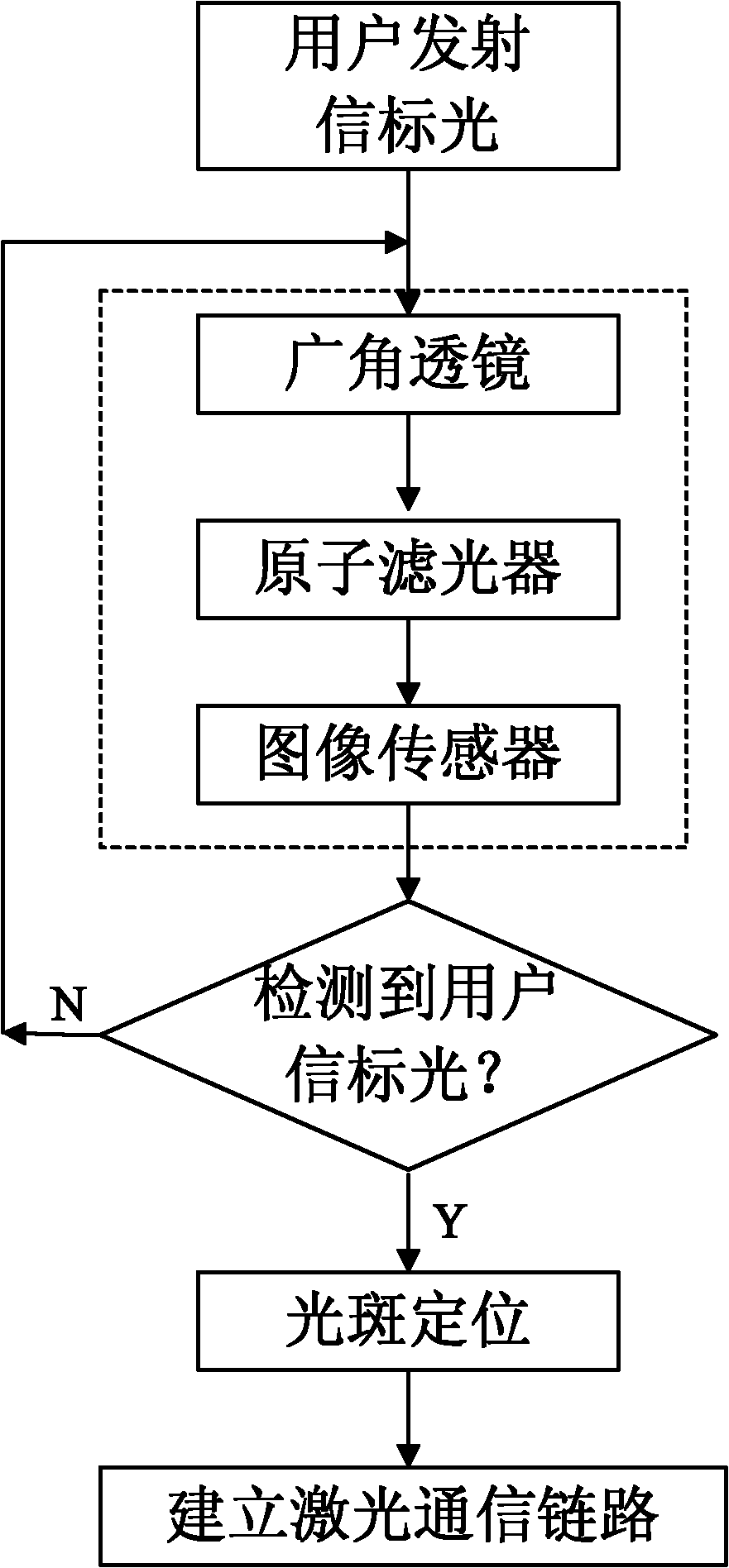Wide-angle lens and atomic filter-based optical signal detection system
A technology of atomic optical filter and wide-angle lens, which is applied in the transmission system, photometry, optical radiation measurement, etc., can solve the problem of poor processing detection time and detection accuracy, limited filtering performance of interference filters, and influence Wide field of view capture performance and other issues to achieve the effect of improving detection accuracy, fast optical signal detection, and reducing capture time
- Summary
- Abstract
- Description
- Claims
- Application Information
AI Technical Summary
Problems solved by technology
Method used
Image
Examples
Embodiment Construction
[0022] In order to make the above objects, features and advantages of the present invention more comprehensible, the present invention will be further described in detail below in conjunction with the accompanying drawings and specific embodiments.
[0023] The invention combines a wide-angle lens and an atomic filter to realize fast optical signal detection in a wide field of view, can search for targets in a larger space range, and complete accurate detection of optical signals, and can also be used in wireless optical communications for wide Field of view photoelectric reception. In this invention, the wide field of view characteristic of the wide-angle lens is used to obtain a larger detection range, thereby saving scanning time, which not only simplifies the structure of the system software and hardware, but also reduces the cost of time. However, the introduction of a wide-angle lens will inevitably increase the background noise. For this reason, the atomic filter is use...
PUM
 Login to View More
Login to View More Abstract
Description
Claims
Application Information
 Login to View More
Login to View More - R&D
- Intellectual Property
- Life Sciences
- Materials
- Tech Scout
- Unparalleled Data Quality
- Higher Quality Content
- 60% Fewer Hallucinations
Browse by: Latest US Patents, China's latest patents, Technical Efficacy Thesaurus, Application Domain, Technology Topic, Popular Technical Reports.
© 2025 PatSnap. All rights reserved.Legal|Privacy policy|Modern Slavery Act Transparency Statement|Sitemap|About US| Contact US: help@patsnap.com



